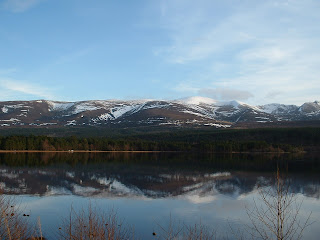 Newton Bridge is a very popular stopping point for walkers or picnics. The River Almond flows under the bridge giving the area a peaceful serenity before carrying on down through the Sma' Glen.
Newton Bridge is a very popular stopping point for walkers or picnics. The River Almond flows under the bridge giving the area a peaceful serenity before carrying on down through the Sma' Glen.More Scottish Photographs
Scotland is the most breathtaking country to visit. With it's beautiful scenery of mountains, lochs, glens, rivers, forests and coastline along with it's diversity of wildlife and natural fauna, it's history, steeped in patriotism, you cannot fail to be overawed if you are fortunate enough to spend time in this magical and mysterious land.
 Newton Bridge is a very popular stopping point for walkers or picnics. The River Almond flows under the bridge giving the area a peaceful serenity before carrying on down through the Sma' Glen.
Newton Bridge is a very popular stopping point for walkers or picnics. The River Almond flows under the bridge giving the area a peaceful serenity before carrying on down through the Sma' Glen.
 Castle Menzies is a spectacular sixteenth century castle, restored by the Menzies Clan Society, welcomes visitors. Seat of the Chiefs of Clan Menzies for over 400 years and importantly situated, it was involved in the turbulent history of the Highlands and here Bonnie Prince Charlie rested on his way to Culloden in 1746.
Castle Menzies is a spectacular sixteenth century castle, restored by the Menzies Clan Society, welcomes visitors. Seat of the Chiefs of Clan Menzies for over 400 years and importantly situated, it was involved in the turbulent history of the Highlands and here Bonnie Prince Charlie rested on his way to Culloden in 1746.
 A dull Sunday afternoon but Glen Lyon never ceases to be breathtaking. Glen Lyon is one of Scotland's most beautiful glens. It starts at Fortingall and runs for some 20 miles to Cashlie. Over the journey it changes dramatically in character. At its base the River Lyon has cut a deep gorge known as MacGregor's leap. It gets its name from an outlaw member of the MacGregor clan, who is said to have escaped justice by leaping the falls. Watch out for the ruined stone bridge, which dates back to the late 18th century, on the opposite bank
A dull Sunday afternoon but Glen Lyon never ceases to be breathtaking. Glen Lyon is one of Scotland's most beautiful glens. It starts at Fortingall and runs for some 20 miles to Cashlie. Over the journey it changes dramatically in character. At its base the River Lyon has cut a deep gorge known as MacGregor's leap. It gets its name from an outlaw member of the MacGregor clan, who is said to have escaped justice by leaping the falls. Watch out for the ruined stone bridge, which dates back to the late 18th century, on the opposite bank
Both species of birch are widespread in Scotland, with silver birch occurring principally on well-drained, drier soils and downy birch preferring wetter locations. In many parts of the country, this results in a longitudinal transition, with silver birch in the east giving way to downy birch in the west.
Birches occur within other forest types, such as pine (Pinus sylvestris) and oak woods (Quercus spp.), and as largely monospecific stands, or birchwoods, in which they are the predominant trees. Birches are the most common native tree in Scotland. However, prior to the deforestation of most of the country by humans, when much larger areas of Scots Pine and Oak forests flourished, it is likely that birch was proportionately less abundant than it is today.
Both species of birch are fast-growing pioneer trees which readily colonise open ground. Silver birch is the faster growing of the two, and also the taller, reaching a height of up to 30 metres, whereas downy birch seldom exceeds 21 metres. As pioneer species, they are short-lived, with typical lifespans being between 60 and 90 years old, although some individuals can live up to 150 years. The trees are slender, with their trunks not normally exceeding a diameter of 40 cm. at breast height. Birch forest are also known as birks.
In young trees the bark is reddish-brown, but this changes to white as they mature. The white bark is most prominent on silver birch, where it is interspersed with conspicuous black patches. By contrast, the bark of downy birch is more greyish-white, with horizontal grooves on it. On old silver birches the bark can become corklike and deeply fissured, with parts covered by large colonies of the yellow foliose lichen, Candelaria concolor.
Birches are deciduous, and before their new leaves appear in spring the twigs and buds exhibit a characteristic reddish-purple colour, which is especially apparent after rain. The new leaves emerge in April and are bright green at first, with the colour darkening to a duller green after a week or two. The colour changes to yellow or brown in autumn, with the colours becoming more intense after sharp frosts. Silver birch leaves tend to turn a brighter yellow than those of downy birch, which are usually dull or brownish. The leaves are dropped at the end of October or early November, although this can be earlier, and the appearance of the new leaves in spring later, at higher elevations, where the climate is harsher.
The Birks of Aberfeldy by Robert Burns


